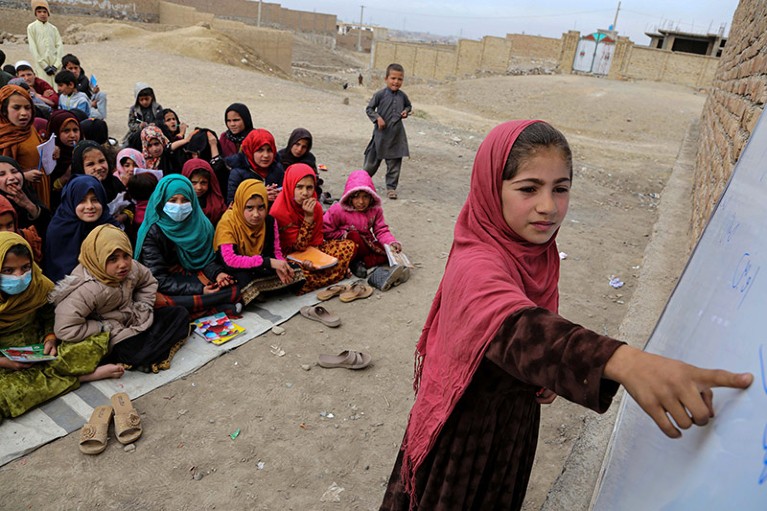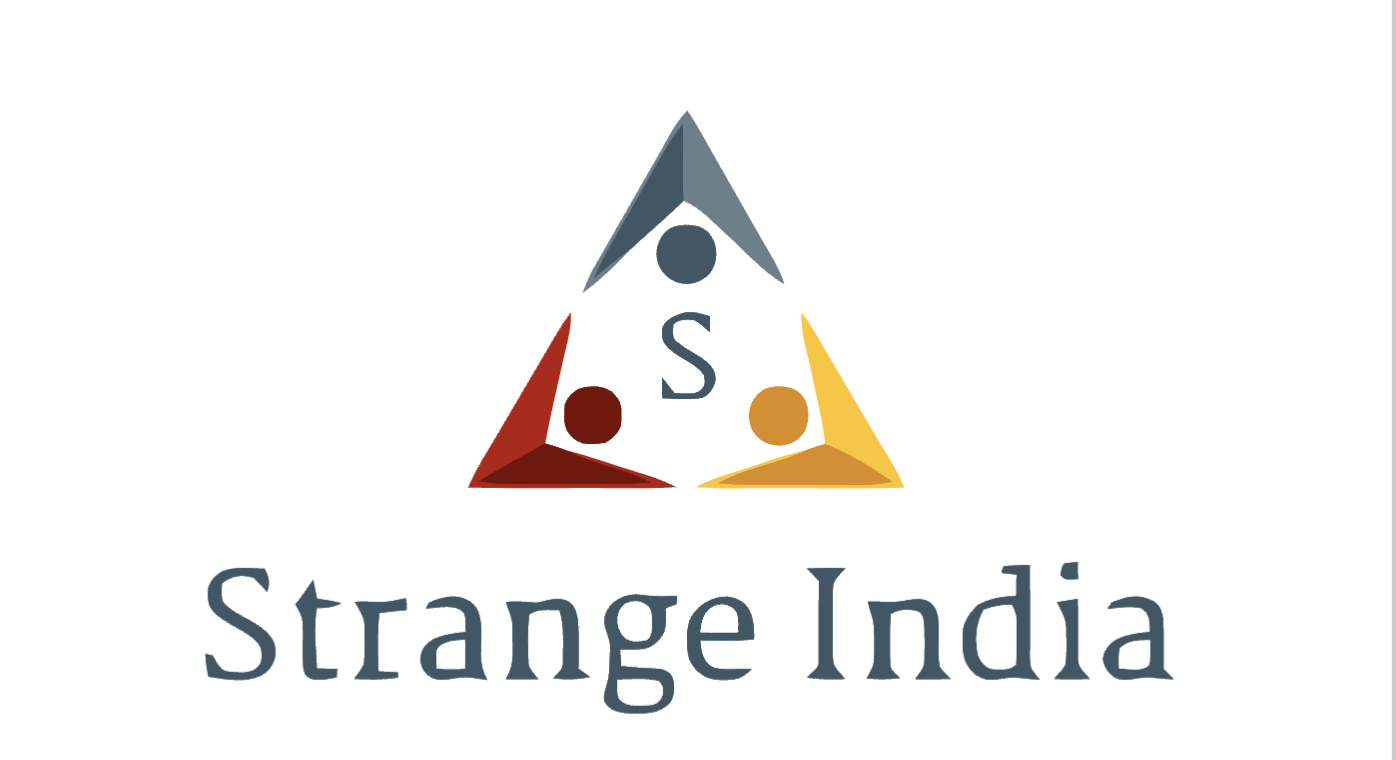
Children at an open-air school in Kabul after the Taliban banned girls from attending secondary schools and universities in Afghanistan.Credit: Samiullah Popal/EPA-EFE/Shutterstock
Nature’s International Women’s Day poll asked two simple questions: what one main thing would readers celebrate about women in science, and what one priority action would respondents recommend to achieve gender equality?
In a Nature editorial published on the day itself, 8 March, leading female researchers gave their thoughts on what they would celebrate. Their suggestions ranged from the increasing number of female leaders in science, to the courage women show in the face of discrimination at every turn, to breaking barriers that have historically held women back.
The results from the reader poll revealed similar themes; persistence and resilience came up as qualities to celebrate. “Women in science are survivors. We are still here and doing outstanding work despite having to waste our time, energy and intelligence to fight structures at the workplace and in society that systematically silence women and push us down,” one respondent said.

Women in science
Another highlighted figures from the United Nations cultural and scientific organization UNESCO, which point out that, globally, an estimated 130 million girls between the ages of approximately 6 and 17 are not attending school, and that 15 million girls of primary-school age will probably never enter a classroom in their lifetime. “We need to deal with women being allowed to be present and receive an education, any kind of education, worldwide,” the respondent said.
A third person echoed scientists’ comments in the editorial about the extra efforts required to achieve equality in some areas of the world: “We should celebrate those female scientists who encouraged young talent from underprivileged backgrounds to achieve excellence in STEM [science, technology, engineering and mathematics]. We should celebrate those resourceful female scientists who even in challenging socioeconomic environments achieved success and benefited their communities/countries.”
Doing science equally
Table of Contents
The question about action to achieve gender equality also brought up common themes.
Many respondents said that instilling the idea of equality in children is essential if progress is to continue. “Education for young children. Make them very excited about science and show them that men and women can do science equally,” one comment read.
Lots of respondents wanted to see better childcare and parental-leave provision, if workplaces are to become more equal. “Childcare! Encourage men (rather than discriminating against them) to take parental leave,” one comment said. “Paid maternity leave and paternity leave (that both parents must take),” said another.
The action that was mentioned most forcefully in the responses was that tackling the gender pay gap should be a priority in achieving a fairer workplace. “PAY US EQUAL TO THE MEN. NOW. Really look at this. Really, really, look at this. Even if, on paper, it looks like we are being paid the same, we are often not,” one reply said. Others suggested recruitment targets to speed up change: “Quotas. As much as it pains me to say. Without quotas change will take another lifetime to achieve and I am tired of waiting.”
There is some way to go until women are treated fairly. That common themes have emerged can be taken as a sign that the solutions are there, and now they need to be acted on
